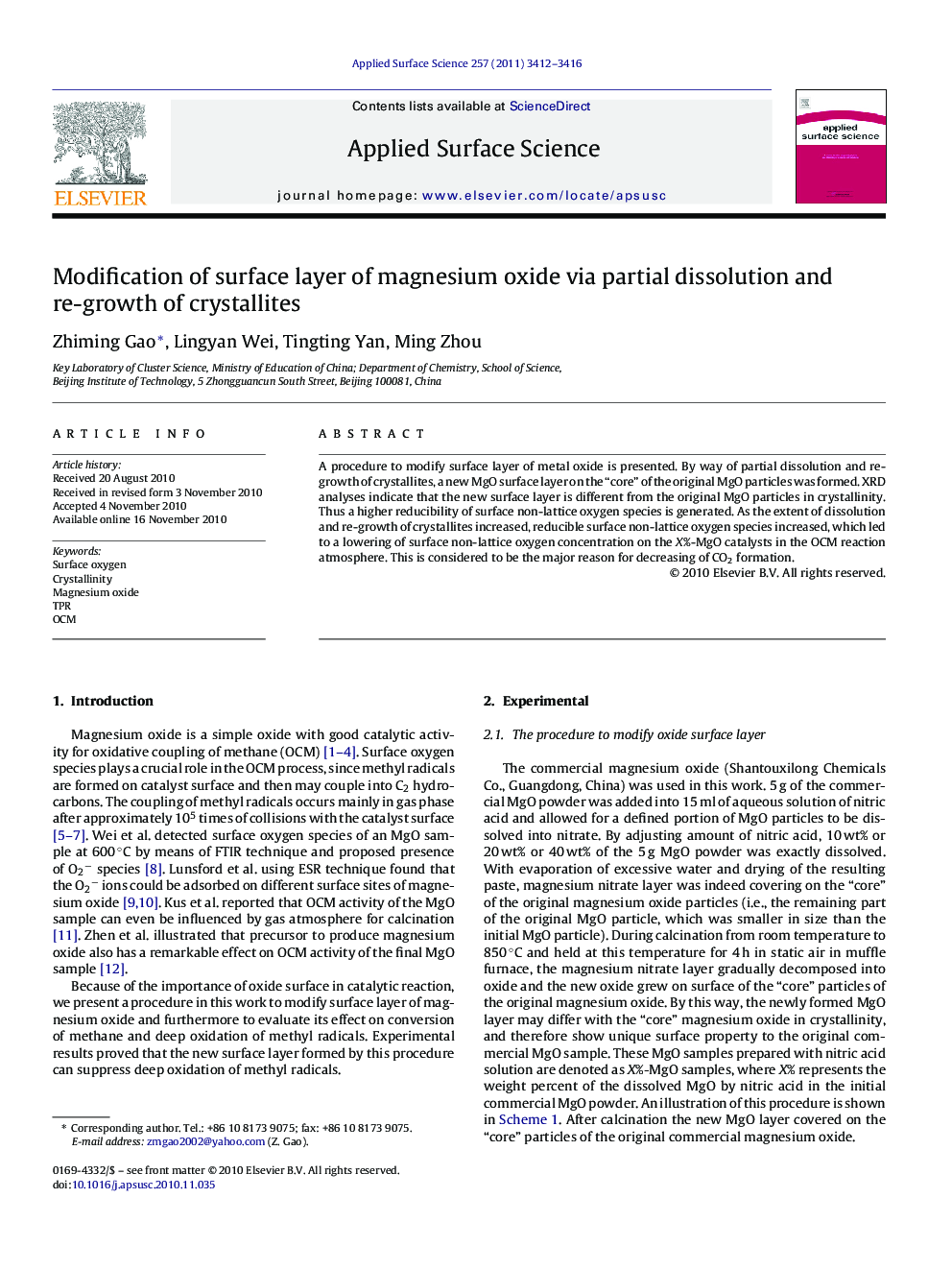| Article ID | Journal | Published Year | Pages | File Type |
|---|---|---|---|---|
| 5368057 | Applied Surface Science | 2011 | 5 Pages |
A procedure to modify surface layer of metal oxide is presented. By way of partial dissolution and re-growth of crystallites, a new MgO surface layer on the “core” of the original MgO particles was formed. XRD analyses indicate that the new surface layer is different from the original MgO particles in crystallinity. Thus a higher reducibility of surface non-lattice oxygen species is generated. As the extent of dissolution and re-growth of crystallites increased, reducible surface non-lattice oxygen species increased, which led to a lowering of surface non-lattice oxygen concentration on the X%-MgO catalysts in the OCM reaction atmosphere. This is considered to be the major reason for decreasing of CO2 formation.
Research highlightsⶠThe paper presents a procedure of partial dissolution and re-growth of crystallites for surface modification of metal oxides. ⶠThe new MgO surface layer generated by this way had a different crystallinity and reducibility to the original MgO particles, and thus effectively suppressed CO2 formation in the OCM reaction.
